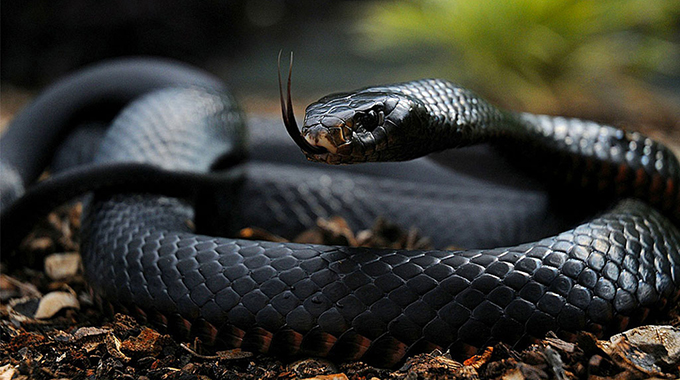Face to fang with a black mamba

Isdore Guvamombe Reflections
The September sun rose with a perfect smile, imperceptibly licking the tinder-hued grass dry of the dew drops. Being a drought year, by mid-morning cicadas had broken into sweet melodies while clinging precariously on tree trunks.
They sang and prayed again and again in a shifting tapestry of vocal stylisation. God and the ancestors seemed not to heed their prayers. Instead, they appeared to have turned the sun’s early morning smile into a huge, cruel and blisteringly hot frown that sucked moisture from the earth and baked the crust to a cracking dry chunk.
Boys being boys, the seven of us set off for Nyambari Mountains, the last vestige of natural habitat for wildlife to hunt on the border of our village and Muzarabani.
In tow were our 16 dogs, the good tried-and-tested hunters of the hare, the impala, the wild pig and every plains game.
Nyambari was also home to a buffet of wild fruits and a multifarious array of bird species — edible or inedible. There mbanje, the illicit weed, grew to big trees and largely remained untouched in fear of their vanguard — Karitundundu — the ageless village autochthon of wisdom and knowledge.
With no shoes and clad in tattered clothes — all that our parents could afford — we went past the white man’s farms, dodging the security guards by using well-calculated routes.
For this villager, there was something uncharacteristic that limited his free movement. He wore a pant for the first time. Yes, for the first time, in Grade six. So, it hurt. It was uncomfortable and caging. Freelancing inside the shorts was over. It was the end of freedom. Grandmother had bought it from a Jew’s shop, kwaMujuta, probably after realising the dangling bits were getting out of hand.
Dande Farm was then owned by a white man, Never Pierce, whom the villagers called by the sobriquet Chimusoro because of his big, egg-shaped head. Chimusoro was a no-nonsense character who beat up both the young and old alike for trespassing. He was notorious for famishing to death, cattle that strayed onto his farm from the villages and would not give a hoot. If you were brave enough to go and collect your cattle before they died, he would flog you.
But that is besides the input of this story. We avoided Chimusoro and his guards and went past his farm. Suddenly the vegetation changed. The dry tall grass on the mountain foot seemed to protest our arrival. Here and there quail and guinea fowl broke loose and scampared on the footpath but as soon as our dogs gave chase and got closer, they flew off, much to our chagrin and much to the disappointment of the dogs.
We saw a green valley, a former swamp sucked out of its water by the blistering heat. It was normally the drinking place for wild animals. More often than not, we had returned home with a kill from there. Being a drought year, there was no swamp at all, neither did we find a drop of water.
In a hunter’s gait, we spread over the valley, eyes open in search of any animal movement, our dogs sniffing and intermittently marking the territory with urine.
At the farthest point of the valley, there appeared extremely lush green vegetation and in characteristic cow-horn formation, we combed the area, while controlling the movement of our dogs, in case there rises an opportunity for an onslaught.
We closed in on the lush greenery and lo and behold!, two wild pigs bathed in a mud rut, ignoring all security measures. We closed in again and again, narrowing their chances of escape.
Suddenly they spotted us and the dogs set after them but the pigs gave a good run and sought refuge in a dark cave. The dogs barked and wailed at the cave’s mouth until we got there.
Encouraged by our arrival, Tsoka Dzehwahwa (the foot-trail of a drunkard), our lead dog, went into the cave, barked and wailed once, then uncharacteristically dashed back and fell on the ground. Another dog, Mukuru, immediately went into the cave and met the same fate.
When the third and fourth dog took turns, they came back paddling, and out came a giant snake, standing up almost our height, its coffin-shaped head hoisted high for an imminent strike. Its forked tongue, sniffing for the enemy. We scattered and ran for dear life. I am still not sure who shouted mubobo, the Shona name for black mamba. We later re-gathered on a rock promontory, huffing and panting and almost half the boys had wet their pants in fear. Back in the village we were to learn from elders that the black mamba was a very dangerous snake that has killed many people in the village and beyond.
The black mamba is a long, slender, cylindrical snake. It has a coffin-shaped head with a somewhat pronounced brow ridge and a medium-sized eye.
You hardly find this snake on black colour, it is called black mamba because the inside of its mouth if black. It can run at a position, raising its head at 1,5 metres from the ground.










Comments